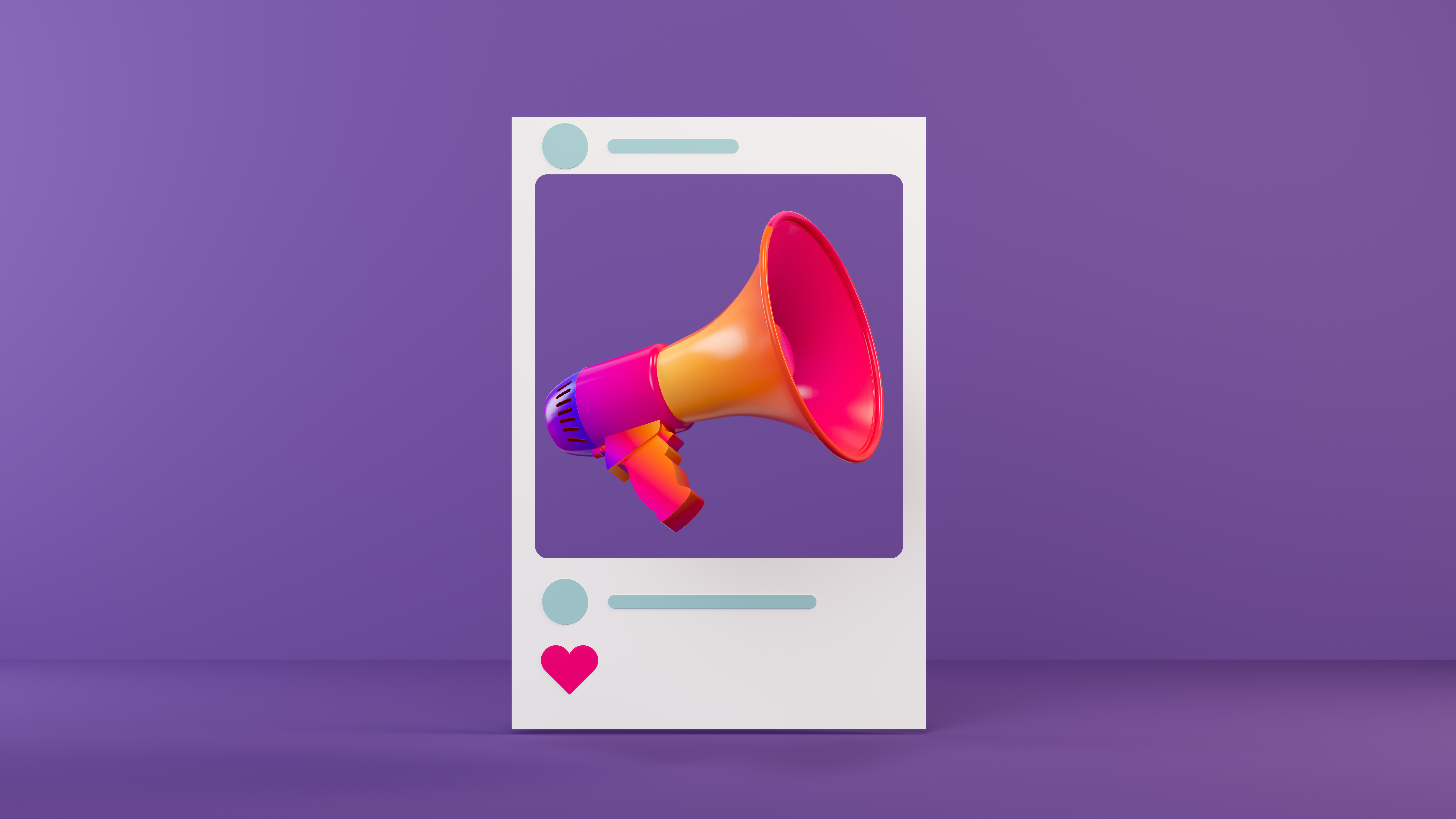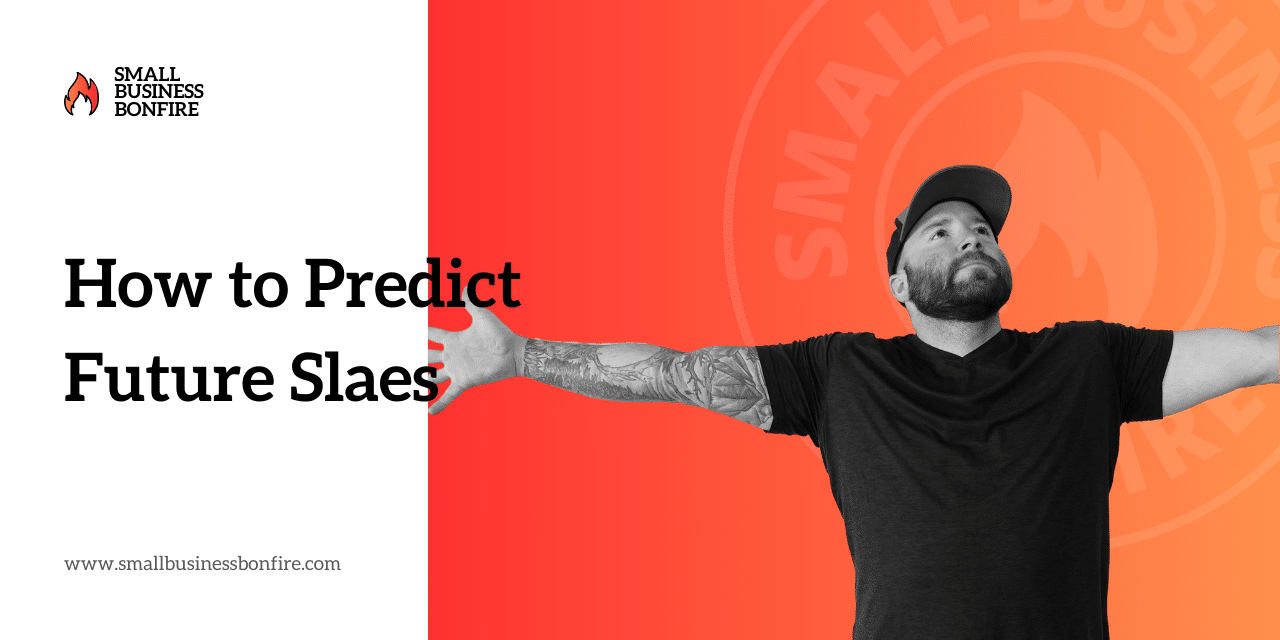How to Create Instagram Story Ads that Bring Results

Table of Contents
With its wide global advertising audience, it’s no wonder that Instagram has great potential for marketers and advertisers.
The idea of using Instagram marketing isn’t new, but the competition is getting stronger each year, so marketers have to be creative when promoting their products and services in-app.
There’s a proven way to cut through the noise and achieve your business goals–Instagram ad campaigns. According to Instagram’s data, 70% of users don’t mind watching ads, and the platform has over 2 million monthly advertisers.
Source: DataReportal
More and more businesses invest in Instagram ads, but just a few realize the power of ephemeral ads that catch engaged users while scrolling other Stories.
Back in 2016, when Instagram Stories appeared on the platform, no one could have predicted its popularity would result in a new powerful ad format like Instagram Story ads.
What are Instagram Story ads?
Instagram launched its advertising feature ten years ago, with its first iteration only supporting still photos. Today, many years later, marketers have the choice of reels, carousels, shopping ads, collection ads, explore ads, and Instagram story ads.
Here’s a handy infographic on Instagram ad formats with the correct sizes.
Source: InfluencerMarketingHub
But if you’re going to focus on one ad format, lay a bet on Instagram Story ads.
When Instagram Stories launched, everyone knew it was a Snapchat copycat. But soon, Instagram Stories became a game changer for the app, garnering hundreds of millions of daily users and beating the original in its own game. Just take a look at the numbers below.
Source: FinancesOnline
What’s more, just like all the other ad formats available on the platform, Instagram Story ads are seamlessly integrated into the user experience. As people tap through their friends’ Stories, branded ads may appear in between.
The ads are vertical, occupy the whole screen, and could be a photo or a video. Unlike regular Instagram Stories that expire after 24 hours, Instagram Story ads end after your specified duration.
The popularity of Instagram Story ads
Instagram Stories quickly became one of the app’s most popular features. There was less pressure to post “Instagram-worthy” content and more space for fun. This meant users spent more time scrolling and posting on Stories than on their main feeds.
Instagram Stories grew faster than feeds
Instagram Stories was regarded as one of Meta’s “smartest moves.”
Not only was it able to slow down the growth of a direct competitor, but it also ushered in a more engaged user base and eliminated the pressure of posting picture-perfect moments. Back in 2018, TechCrunch claimed that Stories were growing 15x faster than feeds.
Just before Instagram Stories launched, Instagram feed content was infamous for being too filtered. Feed posts were reserved for special moments such as vacations, fancy meals, and glamorous events, which meant the ordinary person couldn’t post daily.
From posting occasionally on their feed, users began sharing content multiple times a day through Instagram Stories. Instagram has almost doubled the amount of time users spend on the app ever since they introduced the feature.
Ephemeral content keeps users engaged
Instagram Stories changed the way people use social media. Because Stories only last for 24 hours, there is less pressure to be perfect. It became a platform where people can show their authentic selves and not worry about getting likes or comments.
Knowing the content will disappear after 24 hours gives users the fear of missing out (FOMO), which means the moment it appears on top of their feeds, they’re more likely to click immediately. This is probably why Instagram Stories is still the most popular video format on the platform despite the introduction and heavy promotion of new features like Reels.
Stories have built-in features to achieve business goals
On top of the general features that allow your customers to learn more, contact, or buy now, Instagram Stories has exclusive features that enable you to create more engaging ads.
With interactive stickers, your customers can engage with your content and generate more impact for your campaigns.
For example, you can add a polling sticker, which has proven to keep users viewing ads longer than usual. Depending on your business goals, you can also add “Get a Quote” stickers, shopping tags, swipe-up actions to drive web traffic, and more.
Instagram Story ads vs. feed ads
There’s no simple answer to determine which ad format is better, as it all depends on your campaign goals.
The length of a single-frame Instagram Story ad is 15 seconds. Anything longer will be separated into another card, with a maximum of four cards and a total time of 60 seconds. Similarly, In-feed ads have a maximum limit of 60 seconds, but you won’t have to split the content into multiple cards.
Obviously, Instagram Story ads and feed ads look different to viewers, and the example below illustrates it well.
Source: Buffer
Instagram Story ads generally have better engagement rates compared to in-feed ads because of their immersive format and interactive features.
Talking about the costs, both ad formats allow you to set a budget, which means there’s no fixed cost per ad format. However, Instagram Story ads seem to be more expensive than feed ads because of their additional features, but again, it will depend on the parameters you set for your campaign.
One study has found that Instagram Stories placement brings results cheaper than in-feed ads.
Source: KarolaKarlson
In a nutshell, Instagram Story ads may be a great solution for businesses of all sizes and niches that want to reach their potential customers fast and keep these viewers engaged. If you’re ready to give this ad format a try, keep on reading to find out how to create Instagram story ads that bring results.
8 steps to create Instagram Story ads that bring results
Instagram Stories is an excellent tool for brand discovery, especially if you’re trying to reach a younger audience. But simply having placements on Stories won’t guarantee results.
Since your audience is bombarded with all kinds of content, you have to work extra hard to stand out. We’ve listed down some tips to help you.
Decide on the best ad objective for Instagram Stories
You already know that running ads can help you reach a wider audience. But to run a successful campaign, you must nail down your business goals and objectives.
When setting up an Instagram Story ad, you’re given five marketing objectives to choose from:
- Awareness: Brand awareness ads are for when you want to reach as much of your target audience as possible and introduce them to your business.
- Traffic: Select this goal for when you need to send more people to your page or app.
- Lead generation: This type of ad is used when you need to gather more information about your target audience and collect business leads. Instagram’s lead-generation forms are programmed to autofill with the user’s available information; all they have to do is tap “submit.”
- App installs: Encourages your target audience to download or install your app.
- Sales: Conversion ads that can lead your audience to a particular landing page or your Instagram Storefront.
Having a clear business goal before setting up your ad can help you plan your creative execution and, more importantly, accurately measure your campaign performance.
Invest in creating eye-grabbing Instagram Story ad videos
The immersive experience of Instagram Stories is what makes the ad format so powerful in the first place. Not only does it occupy the entire screen, but it also allows users to pause, tap, swipe, move forward, and interact with ads like never before. But without eye-catching visuals, people will quickly skip over your ad.
It’s not enough to ensure you maximize the screen real estate. You’re also competing with other brands and content creators, so you need to prioritize the most popular content format available — video.
The demand for video content is at an all-time high. People don’t just watch videos for entertainment purposes. They now expect brands to post more video content, too. Thankfully, creating video content is no longer as time-consuming and resource-heavy as before.
With the intuitive video editing apps available in the market today, virtually anyone can shoot, edit, and create thumb-stopping videos with ease.
Team up with a relevant Instagram influencer
There is a lot of controversy attached to the term “influencer,” but like it or not, they are essential in helping brands connect with their desired audiences.
Working with the right influencer specializing in your niche can help you reach an engaged audience ready to try your products. And you don’t even have to spend on a high-profile influencer to get the conversions you need.
Take a look at your existing followers and loyal customers to find the best brand advocate—they may be posting about you already.
You can find brand advocates or nano influencers by searching through your tagged photos and Story mentions. However, If you’re just starting out and haven’t established a loyal following yet, you can use the search bar to look for users who use relevant hashtags and keywords.
Nano influencers tend to have higher engagement than your typical mega influencers because they are able to build personal relationships with their followers. This means their followers don’t just like their content; they also listen to their recommendations.
Once you’ve found the best influencers for your brand, it’s a good idea to maximize their reach by boosting their content on your Instagram Stories using the Collaborate feature.
Make good use of Instagram Story stickers
One of the highlights of Instagram Stories is its stickers. No other ad format has a similar feature, which allows your audience to interact with your ad, providing them with entertainment and earning you valuable insights.
Source: Instagram for Business
Instagram Stories has thousands of stickers available, most of which are there for decorative purposes. Here are some of the notable ones that can help your ad stand out:
- Poll sticker: Poll stickers are a simple and effective way to gather data about product sentiment or customer preference.
- Link sticker: Used for redirecting your audience to landing pages or wherever you want them to go.
- Question sticker: Question stickers are great for connecting with your existing audience and improving engagement.
- Sliding scale sticker: The sliding scale sticker is just another way to get your audience to interact with your story longer. It can also reveal how your target audience feels about a certain product or collection.
- Countdown sticker: The countdown sticker is usually used for product launches or sale days to create hype.
- Location stickers: Location stickers are helpful when promoting a new store location or a pop-up you want your customers to visit.
While stickers are a fun way to keep your audience on your Story longer, use them wisely. Don’t add stickers for the sake of adding interactivity to your ads; otherwise, it will just look like clutter. Always have a goal in mind, and use the stickers to help you achieve it.
Include a catchy CTA in your Instagram Story ad
One thing to keep in mind when running a business on Instagram is: If you don’t ask, never expect. When your target audience lands on your ad, they won’t know what to do unless you have a call to action (CTA).
You can add the CTA as an end card on your Stories or include a link sticker with the action you want them to take. Remember, you’re competing with hundreds of thousands of brands, so your CTA has to be easily visible and compelling.
Use keywords like limited, free, last-chance, and exclusive to hook your audience and reel them in with a strong action word.
Optimize your Instagram Story ad for sound-off viewing
A study by Verizon and Publicis revealed that a whopping 92% of people watch videos on mute, and around 50% rely on captions. While audio is a powerful way to capture your audience’s attention, your content must be just as effective without it.
A huge chunk of your audience is consuming your video during a busy commute or a slow day at the office. They should be able to understand your message without the need for sound. Adding captions to your Instagram Stories can help your audience understand what they’re watching while improving your engagement rates.
To add captions to your Instagram Stories, you can use popular tools with AI-powered caption generators, which provide editable captions in minutes.
Decide on your budget for Instagram ads
How much are you willing to spend on your ad? Meta Business will give you an estimate of your results based on the budget that you set. You can either set a maximum daily budget for “always on” ads or set a lifetime budget for campaigns with a definite end date.
Once your budget is set, you can schedule your ads to appear at certain times or set them to run continuously. Defining your audience will also help you determine your campaign results based on your parameters and budget.
Track analytics of your Instagram Story ads for businesses
Analytics is a crucial skill every Instagram marketer should have. Without understanding your ad performance, you won’t know what steps you can take to improve your future campaigns.
More importantly, you won’t know what works and what doesn’t. That’s why Instagram analytics play a key role in understanding your ad performance.
Unlike looking at the metrics of your organic stories, which are pretty detailed and available through the app, you will need to go through Meta Ads Manager to see a more thorough breakdown of your campaign’s performance. From there, you can access important information such as:
- Impressions: Total number of times your ad appears on someone’s screen.
- Thruplays: Amount of videos played to completion.
- Reach: Total number of people who saw your ad.
- Purchases: Total number of transactions that resulted from your ad.
Through your in-app ads manager, you can also view important data like Profile visits, Exits, and Messaging conversations started. Important metrics to measure will vary from campaign to campaign as they will always depend on your campaign goals and specified marketing objectives.
Best examples of Instagram Story ads
Now that you know the steps to creating effective Instagram Story ads, it’s essential to take a look at how the best brands in the world do it.
Oreo
The beloved cookie brand Oreo launched a highly successful multi-channel campaign with placements in Instagram Stories. The campaign aimed to raise awareness about the limited-edition cookie called the “Most Oreo Oreo.”
The ads, which had placements on both Instagram and Facebook, encouraged users to visit the OREOVERSE, a microsite where they could play Oreo-themed games. They also ran an augmented reality (AR) ad, which, when clicked, opened the user’s camera and loaded a fun AR filter.
The campaign saw a 14-point lift in ad recall, and 75% of OREOVERSE traffic came from paid media from the Meta ad network.
Oreo’s fun visuals wouldn’t have worked without the addition of the clickable CTA, which was visible in all its ads. Without the CTA, web traffic would’ve been much less.
J.Crew
Clothing brand J.Crew launched a re-engagement campaign that targeted customers who previously bought from just one product category. The goal was to get them to purchase other products from the brand and boost multi-category sales.
To achieve this, J.Crew launched carousel ads and clickable photo ads in Stories with a “Shop Now” button.
The campaign brought a 35% incremental lift in multi-category customers. J.Crew’s use of Instagram Story’s clickable sticker was instrumental to the campaign’s success. The ease of use and visibility of the stickers make it a great tool for increasing sales.
Estee Lauder
Makeup brand Estee Lauder used branded content — a technique to showcase a brand story by using creators and influencers — to launch its products in Turkey.
The campaign generated a 5.7-point lift in brand recall compared to business-as-usual content and a 5.6-point lift in brand awareness.
This campaign shows just how valuable influencer partnerships are, especially when there’s a need to reach a brand-new audience. Influencers can localize content and make brands more relatable.
Wendy’s
Fast food chain Wendy’s created a series of ads to target and build relationships with March Madness fans.
Combining AR filter effects, an interactive virtual reality (VR) gaming world, and strategic placements in Meta’s ad network, including videos launched on Instagram Stories, Wendy’s was able to reach over 50 million people throughout the campaign.
Source: Instagram for Business
The campaign successfully associated Wendy’s with March Madness, achieving a 9.1-point lift in ad recall and a 2.9-point lift in purchase intent after seeing Wendy’s ads.
Since Wendy’s was trying to target a specific audience, it was important to invest in eye-catching visuals and AR technology that appealed specifically to that audience. Similarly, you can use AI-generated filters with the help of video editing apps.
Find what makes your audience tick
Use these tips and best-in-class examples to help you craft effective Instagram Story ad campaigns that get you the results you need every time.
Don’t forget to review your past ads and even your organic Instagram Stories to discover what type of content makes your audience tick.
Ready to take your Instagram game to the next level? Transition from crafting captivating Story Ads to mastering the art of selling on the platform!
Edited by Jigmee Bhutia







